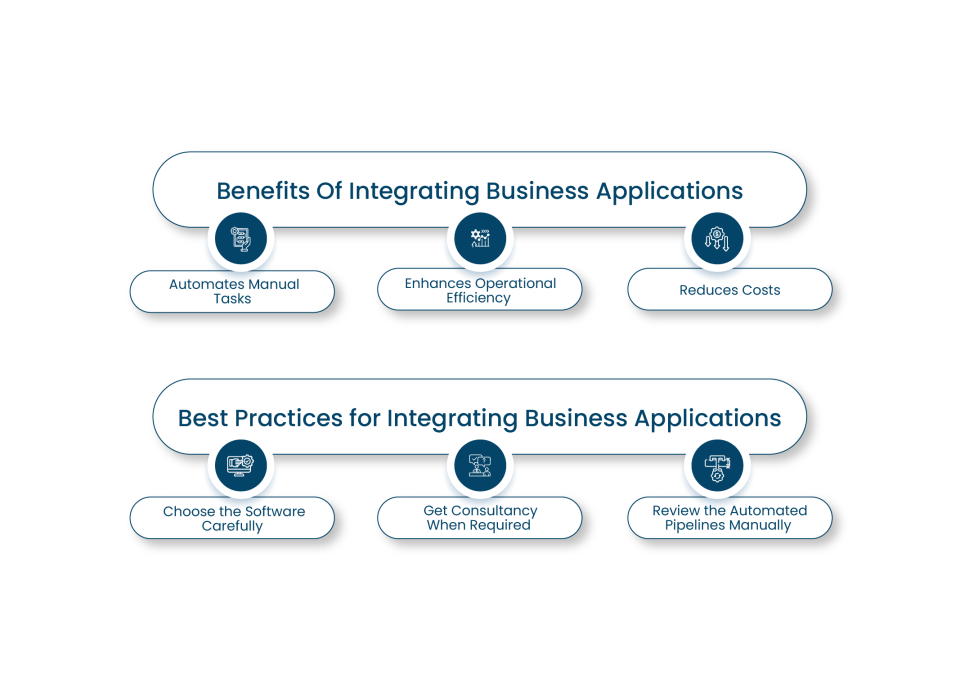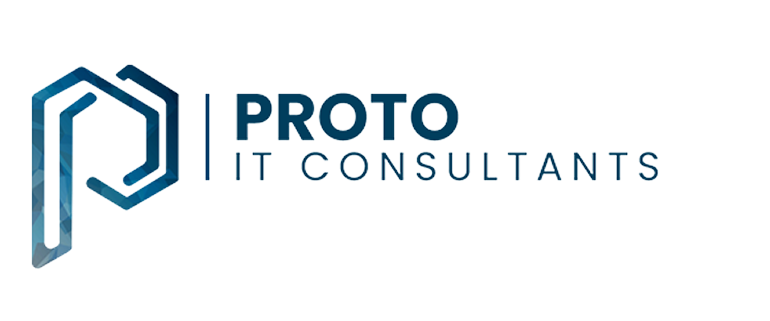As competition gets tough, businesses must perform at their level best to maximize returns and build a loyal following.
However, the biggest challenge for companies in 2025 is too much software and scattered data everywhere. The result? Flawed processes lead to inefficient workflows and a loss of productivity.
This is where tools that help integrate software and centralize data become crucial. But finding such business applications presents yet another problem.
In this post, we will learn about integrating business applications and finding a seamless approach to boost operational efficiency. We will also review some best practices that you can implement for a streamlined workflow.
Benefits of Integrating Business Applications

When you connect your existing tech stack, you make it easy to complete more tasks in less time. But this is just the tip of the iceberg, as there are many more benefits of integrating business applications.
Automates Manual Tasks
Integrations of applications essentially eliminate the need to complete tasks manually, allowing you to focus more on R&D tasks and strategizing for further growth.
When you create automated pipelines, you also eliminate errors associated with manual work. This increases the faith clients put in your work, allowing you to establish yourself as an industry leader.
Let’s take an example to illustrate our point. If you are using Slack to carry out crucial communication for tasks, then you would want to upload the work documents directly to your CRM through Slack without adding an extra step in between.
This is where tools like monday.com create a middle ground between CRMs, communication software, and other platforms. They help in combining one use case with another to centralize data and boost productivity.
Enhances Operational Efficiency
While working with multiple software and platforms at once, it is quite common to do the same tasks repeatedly. But this isn’t the right way to operate a business in 2025.
Instead, go for project management or integration mediums that allow you to seamlessly integrate tools to optimize processes.
As an example, see the monday.com marketplace below.
Daily, we regularly use monday.com as a source to integrate our Gmail, Microsoft Teams, and other applications directly to various work boards. This allows us to keep track of all our clients’ updates and enhance collaboration between team members.
Along with us, there are many other global brands like Coca-Cola that utilize monday.com as their project management software for day-to-day tasks.
All of these steps improve our operational efficiency, allowing us to keep customers satisfied by the timely delivery of projects.
Reduces Costs
As a digital agency, it is quite common to have many operating fronts. For instance, running a client’s LinkedIn along with their portfolio websites, etc. However, when you leave too much work for humans, you increase operational costs for the company.
For example, a company with a dedicated data scraper, compiler, and analyzer for large-scale projects will invest more in payrolls, where they could’ve easily automated these tasks by integrating different software.
Alternatively, they could also help the software ‘talk to each other’ by linking the APIs together or setting triggers through tools like Zapier. Quite convenient, right?
Best Practices for Integrating Business Applications
To improve customer experience through integrated business applications, one must consider the following best practices.
Choose the Software Carefully
Before making the buying decision, always see what type of integrations the software offers. If it does not allow pairing your favorite tools together, then it is better to consider some other alternatives.
Today, many platforms can help you get the right software or tools. For instance, Capterra, where you can find all the relevant details about a software’s integrations, pros, cons, and user reviews.
You can also find software alternatives on such platforms, helping you make an informed decision to choose your workflow.
Get Consultancy When Required
It is important to get in touch with the software’s support team and ask them the right questions at the right time. Email, call, or use any other means the platform has mentioned on their website to ask the vendors what problems their product can solve. If a software is not addressing your pain points, then it may cause problems in the future.
However, you must know that big companies deal with a lot of customers at the same time, which can put your problems on hold.
This is where we can help you out in integrating business applications or addressing your queries regarding other software.
Review the Automated Pipelines Manually
While automation is good, we can’t leave manual review out of the picture. No matter the nature of the tool or web technologies in use, tools are bound to slip up at any given time.
This is why you must keep a vigilant eye on the outputs you are receiving for your automated pipelines. If there are any errors or mistakes in the workflow, then you must correct them immediately to achieve higher accuracy in projects and satisfy more customers.
Remember, the tools are here to do our repetitive and mundane tasks, but they do not replace human capabilities.
Final Thoughts
Integrating Business Applications is a seamless approach to operational efficiency, and there is no doubt about it.
However, taking care of what tech stack you are using is important to integrate tools with ease, centralize data, and remove inaccuracies in the workflow.
If in need, you should always consider getting in touch with an experienced consultancy group to help you get started with streamlining operations.
That will be all for today! If you like what you just read, consider subscribing to our newsletter and going through our other blogs here for more detailed insights.
FAQs
Still have questions? Don’t worry, we’ve got you covered!
Q1: What is business application integration?
A: In simpler words, business application integration refers to connecting different software and tools together to improve working efficiency and centralized data for more accurate outputs.
Q2: How do I know if my business needs integration solutions?
A: If your team is manually transferring data between platforms, repeating the same tasks, or struggling with inconsistent information. Then, it’s time to explore integration between your software.
Q3: Can small businesses benefit from integrations, or is it just for large companies?
A: Regardless of the size and scale of your business, you need integrations to streamline operations and boost productivity.
Q4: Is there a way to change or expand integrations later?
A: Yes, integrations are flexible, allowing you to adjust, expand, or redefine them as your company grows or when you change your set of tools.

